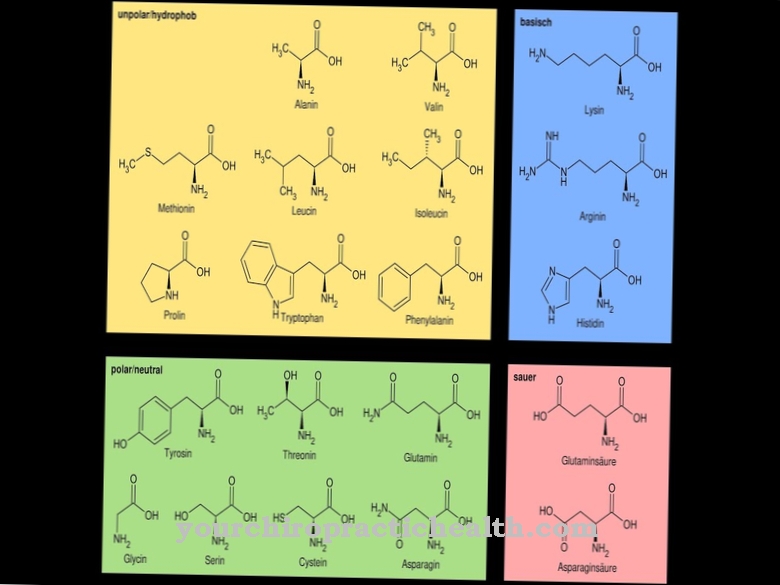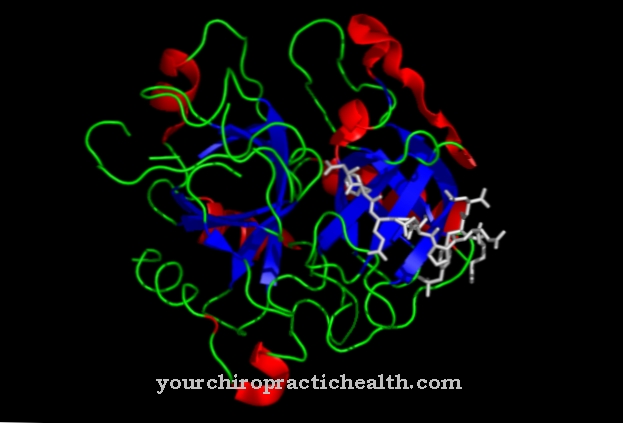The use of Creatine is especially popular among athletes. It is a substance that is not only necessary for physical success, but also for intact health. The human organism can produce part of the demand independently, the other half has to be supplied by food.
What is creatine
Creatine is a product that arises in the course of metabolism and is formed in the liver and kidneys. Glycine and arginine are required to produce creatine.
The substances are amino acids. Amino acids are the building blocks of proteins. As part of the energy metabolism, glycine and arginine are finally converted to creatine. Adenosine triphosphate is ultimately formed from creatine. ATP is needed for every movement of the body. It is energy that is channeled into the muscle fibers so that they can be activated. ATP ensures that the muscles can perform without the occurrence of hyperacidity due to lactate. People need about 2 g / d creatine daily.
While the body can synthesize one half, the other half must be ingested through food so that there are no health restrictions. Athletes have an increased need. The use of supplements is well known among bodybuilders. The increased creatine intake is said to have a positive effect on muscle development.
Function, effect & tasks
Creatine is always used wherever energy has to be provided within a short time frame. This makes the substance particularly suitable for muscles.
Creatine became known primarily through bodybuilders, who initially justified their success with a generous intake of creatine. Nowadays it is known that creatine alone is not enough for a large muscle gain and instead some other factors play an important role. However, when taken regularly, creatine enables an increase in creatine stores. This can result in an increase in strength of around 20 percent. Creatine can facilitate the storage of carbohydrates in the cells.
The substance thus also helps with other physical activities such as endurance sports. The performance can be kept constant for longer. Creatine is not only suitable for athletes. Studies have now shown that it also has a positive effect on cardiac arrhythmias such as those that occur after a heart attack. Furthermore, bones, cartilage, brain and nerve cells should be protected by creatine. When orthopedic surgery is due, some patients are advised to increase their intake of creatine.
Furthermore, creatine is said to be able to extend the life of the patient to a limited extent in certain diseases such as AIDS, cancer and ALS. In general, creatine is an intermediate product of energy metabolism. This enables the organism to synthesize creatine. Ingested through food, it reaches the intestine and can be absorbed there. With the help of the blood, the substance is transported to the muscles. Creatine is excreted through the kidneys.
Education, occurrence, properties & optimal values
Creatine is produced in the liver and kidneys. Arginine, glycine, guanidine-acetic acid and methylation ensure that creatine is formed from methionine. A person who weighs approximately 70 kilograms has a requirement of 0.2 to 0.3 grams of creatine per day. Half is made by the body, so the amount is halved.
Dietary supplements, among other things, can also be considered for external intake. In general, however, a creatine deficiency is very rare in this country, so that it is usually not necessary to pay more attention to the substance. In athletes, creatine is converted into creatine phosphate during the training phases. Creatine phosphate is formed when creatine and phosphoric acid combine with one another. The body can, in turn, obtain ATP from creatine phosphate for powerful muscles.
Creatine phosphate can be stored in the muscles. Creatine cannot be measured in the blood. It looks different with the breakdown product creatinine. An increased value can, among other things, indicate damage to the kidneys. The targeted intake of creatine is supposed to increase the creatine store.
Diseases & Disorders
Creatine prevents over-acidification of the muscles and provides the energy for sprints or strength exercises within a short time. However, excessive dosage can also result in side effects.
First, the organism inhibits its own production of the substance in the event of an increased external intake. If the supplementation is discontinued, the body may not start producing itself for about 30 days. In addition, excess creatine deposits water in the muscles. This will result in a weight gain of around 2 kilos. Many athletes suspect that muscle growth is behind the extra pounds. Most of the time it is all about water. Permanent strong supplementation leads to hardening of the muscles.
In some people, an increased risk of injury to the muscles can be observed. This means that the additional intake of creatine can increasingly achieve the opposite of the hoped-for effect. Taken immediately before physical activity, athletes suffer from stomach and intestinal problems as well as bad breath. If the supplementation is not accompanied by enough water, kidney problems will arise in the long term. In addition, those affected notice an increased incidence of muscle injuries and cramps.
Such symptoms are particularly common when creatine is overdosed over a long period of time. Although interactions with other drugs have not yet been adequately researched, experts assume that the combination of certain substances and creatine can cause symptoms.


.jpg)










.jpg)

.jpg)
.jpg)











.jpg)